
South Lanarkshire is one of 32 unitary authorities of Scotland. It borders the south-east of the City of Glasgow and contains some of Greater Glasgow's suburbs. It also contains many towns and villages. It also shares borders with Dumfries and Galloway, East Ayrshire, East Renfrewshire, North Lanarkshire, the Scottish Borders and West Lothian. It includes part of the historic county of Lanarkshire.
William Cleland was a Scottish poet and soldier.

Cameronian was a name given to a radical faction of Scottish Covenanters who followed the teachings of Richard Cameron, and who were composed principally of those who signed the Sanquhar Declaration in 1680. They were also known as Society Men, Sanquharians, and Hillmen. The Societies of Cameronians for the Maintenance of the Presbyterian Form of Worship were formed about 1681. There is no evidence that organised bands came from any parish or district to either Drumclog or Bothwell Bridge in June 1679. The United Societies were not in existence at that period. After 1688 it was different. The Covenanters were by then organised in their Societies which were again united in larger groups called" Correspondences.” Their testimony, "The Informatory Vindication", was published in 1687. They quickly became the most pronounced and active adherents of the covenanting faith. The Cameronians were part of the Covenanting party but it has to be remembered that they formed only a section of the party. Alexander Peden, to take one example, never belonged to the Societies, and there is some reason to believe that John Brown of Priesthill was actually expelled from their membership.

East Kilbride, Strathaven and Lesmahagow is a county constituency of the House of Commons of the Parliament of the United Kingdom, which was first used in the general election of 2005. It replaced East Kilbride and some of Clydesdale, and it elects one Member of Parliament (MP) by the first past the post system of election.

Old Mortality is a novel by Walter Scott set in the period 1679–89 in south west Scotland. It forms, along with The Black Dwarf, the 1st series of Scott's Tales of My Landlord. The two novels were published together in 1816. Old Mortality is considered one of Scott's best novels.

Mugdock Country Park is a country park and historical site located partly in East Dunbartonshire and partly in Stirling, in the former county of Stirlingshire, Scotland. It is around 10 miles (16 km) to the north of Glasgow, next to Milngavie, and covers an area of 260 hectares.
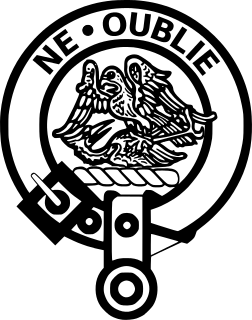
Clan Graham is a Scottish clan who had territories in both the Scottish Highlands and Lowlands.
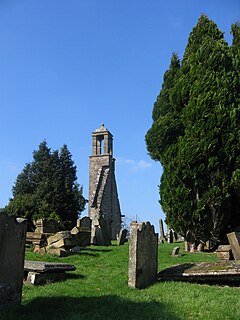
Stonehouse is a rural village in South Lanarkshire, Scotland. It is on Avon Water in an area of natural beauty and historical interest, near to the Clyde Valley. It is on the A71 trunk road between Edinburgh and Kilmarnock, near the towns of Hamilton, Larkhall and Strathaven. The population of Stonehouse is around 7,500.
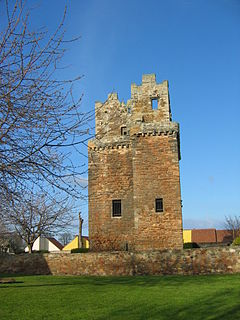
Preston Tower is a ruined L-plan keep in the ancient Scottish village of Prestonpans. It is situated within a few metres of two other historic houses, Hamilton House and Northfield House.

Caldermill is a hamlet in South Lanarkshire, Scotland.
John Nisbet (1627–1685) was a Scottish covenanter who was executed for participating in the rebellion at Bothwell Brig. He was a descendant of Murdoch Nisbet, a Lollard who translated the Bible into the Scots language.
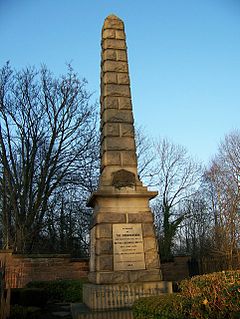
The Battle of Bothwell Bridge, or Bothwell Brig, took place on 22 June 1679. It was fought between government troops and militant Presbyterian Covenanters, and signalled the end of their brief rebellion. The battle took place at the bridge over the River Clyde in Hamilton, South Lanarkshire near Bothwell in Lanarkshire, Scotland. The battlefield has been included in the Inventory of Historic Battlefields in Scotland and protected by Historic Scotland under the Historic Environment (Amendment) Act 2011.

The Covenanters were a Scottish Presbyterian movement that played an important part in the history of Scotland, and to a lesser extent that of England and of Ireland, during the 17th century. Presbyterian denominations tracing their history to the Covenanters and often incorporating the name continue the ideas and traditions in Scotland and internationally.
William Aiton was a Scottish law agent, agriculturalist and sheriff-substitute of the county of Lanark. He was an authority on all matters bearing on Scottish husbandry.
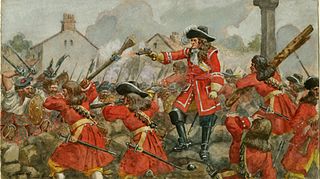
The Jacobite rising of 1689 was the first of a series of risings to take place with the aim of restoring James VII, the last Catholic monarch, and later his descendants of the House of Stuart, to the throne of Scotland, after they had been deposed by Parliament in the Glorious Revolution of 1688. Supporters of the exiled Stuart kings were known as 'Jacobites' and the associated political movement as Jacobitism.
This page is based on this
Wikipedia article Text is available under the
CC BY-SA 4.0 license; additional terms may apply.
Images, videos and audio are available under their respective licenses.













